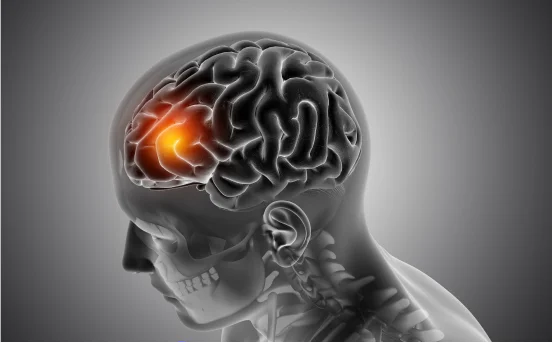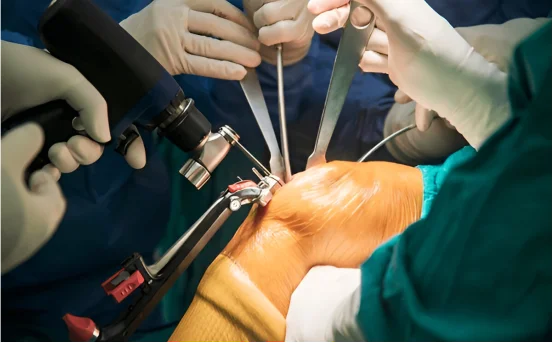What is Temporal lobectomy a neurosurgical procedure often recommended for people with medically refractory epilepsy a condition where seizures do not respond adequately to medications. As one of the most commonly performed epilepsy surgeries, temporal lobectomy has a high success rate, particularly for patients with temporal lobe epilepsy (TLE). But what exactly is this procedure, and who is it for?
Epilepsy affects millions of people around the world, and while many find relief through anti-seizure medications, some individuals continue to suffer from frequent, disabling seizures despite trying multiple drugs. This condition is known as medically refractory epilepsy or drug-resistant epilepsy. For these patients, surgical treatment becomes a viable and potentially life-changing option. One of the most effective surgical procedures for treating this condition is called a temporal lobectomy.
What is a Temporal Lobectomy?
A temporal lobectomy is a surgical operation that involves removing a portion of the temporal lobe of the brain, usually to treat epilepsy originating in that region. The temporal lobe located on each side of the brain near the temples is responsible for functions like language, memory, and auditory processing.
In most cases, this procedure is used to remove seizure-generating tissue in the medial temporal lobe, such as the hippocampus, amygdala, or surrounding cortex.
Who Needs a Temporal Lobectomy?
Temporal lobectomy is typically recommended when :-
-
A patient has temporal lobe epilepsy confirmed through EEG and MRI.
-
Seizures are not controlled with at least two anti-epileptic medications.
-
Imaging studies show an abnormality like mesial temporal sclerosis (MTS) or a brain lesion.
-
Other tests confirm that the seizure focus is localized and does not affect critical brain areas like speech in the dominant hemisphere.
This procedure is not a first-line treatment; it is considered only after exhaustive diagnostic evaluations and failed medical therapy.
Types of Temporal Lobectomy
There are two main types of temporal lobectomy :-
Standard Anterior Temporal Lobectomy (ATL)
This involves the removal of 3–6 cm of the anterior temporal lobe, including the hippocampus and amygdala. It is the most widely used and well-researched technique.
Selective Amygdalohippocampectomy (SAH)
This technique removes only the amygdala and hippocampus, sparing the outer temporal cortex. It is often considered when preserving cognitive function, especially language and memory, is a priority.
The choice between ATL and SAH depends on patient-specific factors, including seizure focus location, cognitive mapping results, and the surgeon’s expertise.
Diagnostic Workup Before Surgery
To determine whether a temporal lobectomy is appropriate, a comprehensive presurgical evaluation is required. This usually includes :-
-
MRI of the brain :- To identify structural lesions or abnormalities.
-
Video EEG monitoring :- To record seizure activity and confirm the seizure onset zone.
-
Neuropsychological testing :- To assess baseline cognitive function.
-
PET or SPECT scans :- To evaluate brain metabolism and blood flow.
-
Functional MRI (fMRI) or Wada test :- To determine language and memory dominance.
These tests ensure that the surgery targets the correct area and minimizes risks to critical brain functions.
The Temporal Lobectomy Procedure: What to Expect?
Preoperative Preparation
Before surgery, patients undergo blood tests, imaging, and anesthesia evaluations. You’ll meet with the surgical and neurology team to discuss expectations and possible outcomes.
Surgical Steps
-
Anesthesia :- General anesthesia is administered to ensure you’re asleep and pain-free.
-
Craniotomy :- A small part of the skull is removed to access the temporal lobe.
-
Tissue Removal :- The surgeon removes the seizure-generating parts of the brain, typically including the anterior temporal lobe, hippocampus, and amygdala.
-
Closure :- The bone flap is replaced, and the scalp is closed with sutures or staples.
Duration
The procedure usually takes 3 to 5 hours, depending on complexity.
Recovery After Temporal Lobectomy
Hospital Stay
Most patients stay in the hospital for 3 to 7 days post-surgery. Initial monitoring focuses on :-
-
Seizure activity
-
Neurological status
-
Pain control and infection prevention
At-Home Recovery
-
Rest is crucial in the first 2–4 weeks.
-
Avoid heavy lifting and driving until cleared by your doctor.
-
Gradual return to normal activities over 6 to 8 weeks.
Follow-Up
Regular follow-up appointments with a neurologist and neurosurgeon are essential. Anti-seizure medications may be continued for months or years post-surgery.
Success Rate and Long-Term Outcome
Temporal lobectomy offers one of the highest success rates in epilepsy surgery. Studies show :-
-
Up to 70–80% of patients become seizure-free long-term.
-
An additional 10–15% report a significant reduction in seizure frequency.
-
Better outcomes are observed in patients with mesial temporal sclerosis (MTS) or a clear focal seizure onset.
Some patients may be able to reduce or stop anti-epileptic medications under medical supervision.
Risks and Complications of Temporal Lobectomy
While temporal lobectomy is generally safe, it does carry some risks :-
Common Risks :-
-
Memory problems, especially verbal memory loss (more common in left-sided surgeries)
-
Speech or language difficulties
-
Visual field deficits
-
Infection, bleeding, or stroke (rare)
-
Mood changes or depression
Careful pre-surgical planning and post-operative rehabilitation can help minimize these risks.
Temporal Lobectomy vs. Other Epilepsy Treatments
When medications fail, several options may be considered :-
-
Vagus Nerve Stimulation (VNS) :- Involves implanting a device to reduce seizure frequency.
-
Responsive Neurostimulation (RNS) :- Delivers electrical stimulation to seizure-prone areas.
-
Laser Ablation (LITT) :- A minimally invasive option for destroying seizure tissue.
However, temporal lobectomy remains the gold standard for patients with well-localized temporal lobe epilepsy and has the highest likelihood of complete seizure control.
Life After Temporal Lobectomy
Many patients experience a dramatic improvement in quality of life after successful surgery, including :-
-
Fewer or no seizures
-
Increased independence
-
Ability to return to school or work
-
Improved emotional well-being
Support from family, therapists, and epilepsy groups plays a crucial role during the recovery phase.
Conclusion
Temporal lobectomy is a life-changing surgery for patients suffering from drug-resistant temporal lobe epilepsy. With a high success rate, thorough diagnostic evaluation, and specialized surgical care, many patients achieve complete seizure freedom and significantly improved quality of life.























